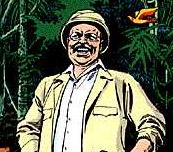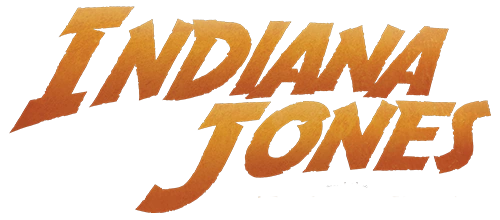| Line 13: | Line 13: | ||
'''Theodore "Teddy" Roosevelt''' was the 26th president of the [[United States of America]], in office from [[1901]] to [[1909]]. He is one of the most famous presidents of the United States, known for his energy and zeal for physical life. Prior to becoming president, he led the Rough Riders during the Spanish-American War. Apart from that role, he is also known as a big game hunter, boxer, explorer and author. A champion of conservation, he established the first US National Monument. For brokering the end of the Russo-Japanese War, he was awarded the 1906 Nobel Peace Prize, the first American to receive one. |
'''Theodore "Teddy" Roosevelt''' was the 26th president of the [[United States of America]], in office from [[1901]] to [[1909]]. He is one of the most famous presidents of the United States, known for his energy and zeal for physical life. Prior to becoming president, he led the Rough Riders during the Spanish-American War. Apart from that role, he is also known as a big game hunter, boxer, explorer and author. A champion of conservation, he established the first US National Monument. For brokering the end of the Russo-Japanese War, he was awarded the 1906 Nobel Peace Prize, the first American to receive one. |
||
| + | ==Biography== |
||
| − | ==Adventures with Theodore Roosevelt== |
||
[[Image:Roose.jpg|173px|thumb|left|Theodore Roosevelt]] |
[[Image:Roose.jpg|173px|thumb|left|Theodore Roosevelt]] |
||
After his second term as president had completed in the spring of [[1909]], he and one of his sons, [[Kermit Roosevelt|Kermit]], traveled to [[British East Africa]] on a hunting expedition to help collect animal specimens for the [[Smithsonian Institution]]. They were joined by big game hunter [[Frederick Selous]]. Roosevelt brought along his weights for weight training in the camp. |
After his second term as president had completed in the spring of [[1909]], he and one of his sons, [[Kermit Roosevelt|Kermit]], traveled to [[British East Africa]] on a hunting expedition to help collect animal specimens for the [[Smithsonian Institution]]. They were joined by big game hunter [[Frederick Selous]]. Roosevelt brought along his weights for weight training in the camp. |
||
| − | In September, [[Kirinyaga safari camp|Roosevelt's camp]] received some guests, [[Richard Medlicot]] and the Jones family. Roosevelt was impressed with young [[Indiana Jones]], teaching him to fire a gun, and the importance of conservation, and how this hunt was important in bringing education to America through the museums that would benefit from stuffed animals. Giving the boy a pair of binoculars, Roosevelt encouraged Indy to explore and witness nature. One night, over a game of checkers, Roosevelt agreed to allow Indy to help solve the mystery of the Burton's [[ |
+ | In September, [[Kirinyaga safari camp|Roosevelt's camp]] received some guests, [[Richard Medlicot]] and the Jones family. Roosevelt was impressed with young [[Indiana Jones]], teaching him to fire a gun, and the importance of conservation, and how this hunt was important in bringing education to America through the museums that would benefit from stuffed animals. Giving the boy a pair of binoculars, Roosevelt encouraged Indy to explore and witness nature. One night, over a game of checkers, Roosevelt agreed to allow Indy to help solve the mystery of the Burton's [[fringe-eared oryx]]. Indy was presumed lost the next day and Roosevelt led the search parties. When Indy appeared in the evening, Roosevelt sternly rebuked him in front of his parents. However, the next morning at breakfast, Roosevelt was pleased when Indy and [[Meto]] had discovered where the oryx was to be found, and the scientific reasoning that Indy provided as to why so few where around. |
Roosevelt and his crew followed Indy and Meto to the oryx's grounds, and shot three of the creatures before being stopped by a pleading Indy. Realizing that his young friend was distressed, he stood down his rifle and rationalized to the hunting party that Indy was right -- there were too few of these creatures to kill any more of them. |
Roosevelt and his crew followed Indy and Meto to the oryx's grounds, and shot three of the creatures before being stopped by a pleading Indy. Realizing that his young friend was distressed, he stood down his rifle and rationalized to the hunting party that Indy was right -- there were too few of these creatures to kill any more of them. |
||
Revision as of 20:01, 25 February 2010
Theodore "Teddy" Roosevelt was the 26th president of the United States of America, in office from 1901 to 1909. He is one of the most famous presidents of the United States, known for his energy and zeal for physical life. Prior to becoming president, he led the Rough Riders during the Spanish-American War. Apart from that role, he is also known as a big game hunter, boxer, explorer and author. A champion of conservation, he established the first US National Monument. For brokering the end of the Russo-Japanese War, he was awarded the 1906 Nobel Peace Prize, the first American to receive one.
Biography

Theodore Roosevelt
After his second term as president had completed in the spring of 1909, he and one of his sons, Kermit, traveled to British East Africa on a hunting expedition to help collect animal specimens for the Smithsonian Institution. They were joined by big game hunter Frederick Selous. Roosevelt brought along his weights for weight training in the camp.
In September, Roosevelt's camp received some guests, Richard Medlicot and the Jones family. Roosevelt was impressed with young Indiana Jones, teaching him to fire a gun, and the importance of conservation, and how this hunt was important in bringing education to America through the museums that would benefit from stuffed animals. Giving the boy a pair of binoculars, Roosevelt encouraged Indy to explore and witness nature. One night, over a game of checkers, Roosevelt agreed to allow Indy to help solve the mystery of the Burton's fringe-eared oryx. Indy was presumed lost the next day and Roosevelt led the search parties. When Indy appeared in the evening, Roosevelt sternly rebuked him in front of his parents. However, the next morning at breakfast, Roosevelt was pleased when Indy and Meto had discovered where the oryx was to be found, and the scientific reasoning that Indy provided as to why so few where around.
Roosevelt and his crew followed Indy and Meto to the oryx's grounds, and shot three of the creatures before being stopped by a pleading Indy. Realizing that his young friend was distressed, he stood down his rifle and rationalized to the hunting party that Indy was right -- there were too few of these creatures to kill any more of them.
Indy kept a photo of himself and Theodore Roosevelt in his journal[1].
Behind the scenes
James Gammon played the role of Theodore Roosevelt in the episode "British East Africa, September 1909" of The Young Indiana Jones Chronicles.
Appearances
- The Young Indiana Jones Chronicles – "British East Africa, September 1909"" → Passion for Life
- British East Africa, September 1909 comic
Sources
- The Lost Journal of Indiana Jones
- Indiana Jones: The Official Magazine 3
- Indiana Jones: The Ultimate Guide
